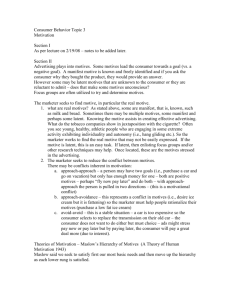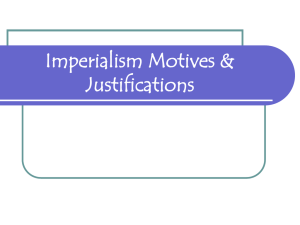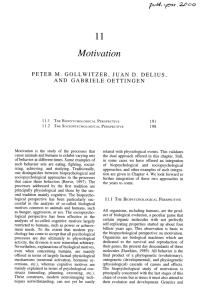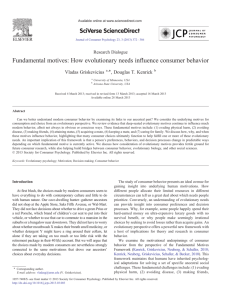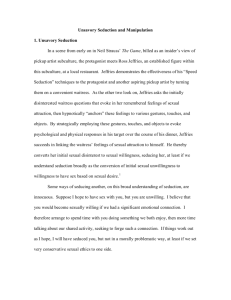Motives of young adults for being in nature considering
advertisement
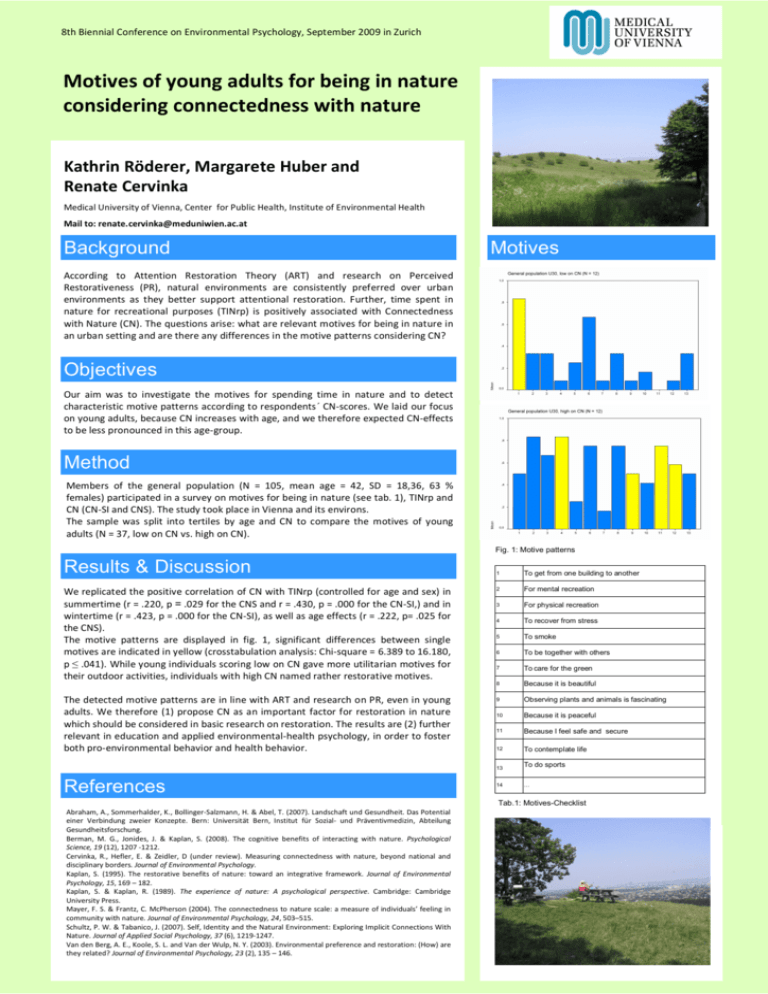
8th Biennial Conference on Environmental Psychology, September 2009 in Zurich Motives of young adults for being in nature considering connectedness with nature Kathrin Röderer, Margarete Huber and Renate Cervinka Medical University of Vienna, Center for Public Health, Institute of Environmental Health Mail to: renate.cervinka@meduniwien.ac.at Background Motives According to Attention Restoration Theory (ART) and research on Perceived Restorativeness (PR), natural environments are consistently preferred over urban environments as they better support attentional restoration. Further, time spent in nature for recreational purposes (TINrp) is positively associated with Connectedness with Nature (CN). The questions arise: what are relevant motives for being in nature in an urban setting and are there any differences in the motive patterns considering CN? Objectives Our aim was to investigate the motives for spending time in nature and to detect characteristic motive patterns according to respondents´ CN-scores. We laid our focus on young adults, because CN increases with age, and we therefore expected CN-effects to be less pronounced in this age-group. Method Members of the general population (N = 105, mean age = 42, SD = 18,36, 63 % females) participated in a survey on motives for being in nature (see tab. 1), TINrp and CN (CN-SI and CNS). The study took place in Vienna and its environs. The sample was split into tertiles by age and CN to compare the motives of young adults (N = 37, low on CN vs. high on CN). Fig. 1: Motive patterns Results & Discussion We replicated the positive correlation of CN with TINrp (controlled for age and sex) in summertime (r = .220, p = .029 for the CNS and r = .430, p = .000 for the CN-SI,) and in wintertime (r = .423, p = .000 for the CN-SI), as well as age effects (r = .222, p= .025 for the CNS). The motive patterns are displayed in fig. 1, significant differences between single motives are indicated in yellow (crosstabulation analysis: Chi-square = 6.389 to 16.180, p ≤ .041). While young individuals scoring low on CN gave more utilitarian motives for their outdoor activities, individuals with high CN named rather restorative motives. The detected motive patterns are in line with ART and research on PR, even in young adults. We therefore (1) propose CN as an important factor for restoration in nature which should be considered in basic research on restoration. The results are (2) further relevant in education and applied environmental-health psychology, in order to foster both pro-environmental behavior and health behavior. References 1 To get from one building to another 2 For mental recreation 3 For physical recreation 4 To recover from stress 5 To smoke 6 To be together with others 7 To care for the green 8 Because it is beautiful 9 Observing plants and animals is fascinating 10 Because it is peaceful 11 Because I feel safe and secure 12 To contemplate life 13 To do sports 14 … Tab.1: Motives-Checklist Abraham, A., Sommerhalder, K., Bollinger-Salzmann, H. & Abel, T. (2007). Landschaft und Gesundheit. Das Potential einer Verbindung zweier Konzepte. Bern: Universität Bern, Institut für Sozial- und Präventivmedizin, Abteilung Gesundheitsforschung. Berman, M. G., Jonides, J. & Kaplan, S. (2008). The cognitive benefits of interacting with nature. Psychological Science, 19 (12), 1207 -1212. Cervinka, R., Hefler, E. & Zeidler, D (under review). Measuring connectedness with nature, beyond national and disciplinary borders. Journal of Environmental Psychology. Kaplan, S. (1995). The restorative benefits of nature: toward an integrative framework. Journal of Environmental Psychology, 15, 169 – 182. Kaplan, S. & Kaplan, R. (1989). The experience of nature: A psychological perspective. Cambridge: Cambridge University Press. Mayer, F. S. & Frantz, C. McPherson (2004). The connectedness to nature scale: a measure of individuals’ feeling in community with nature. Journal of Environmental Psychology, 24, 503–515. Schultz, P. W. & Tabanico, J. (2007). Self, Identity and the Natural Environment: Exploring Implicit Connections With Nature. Journal of Applied Social Psychology, 37 (6), 1219-1247. Van den Berg, A. E., Koole, S. L. and Van der Wulp, N. Y. (2003). Environmental preference and restoration: (How) are they related? Journal of Environmental Psychology, 23 (2), 135 – 146. © Cervinka



